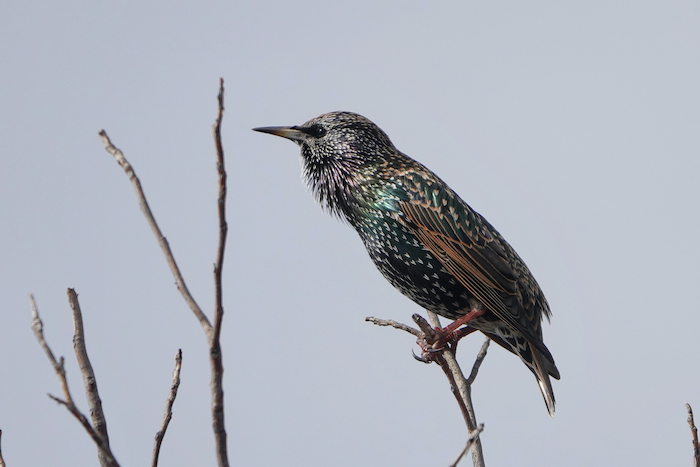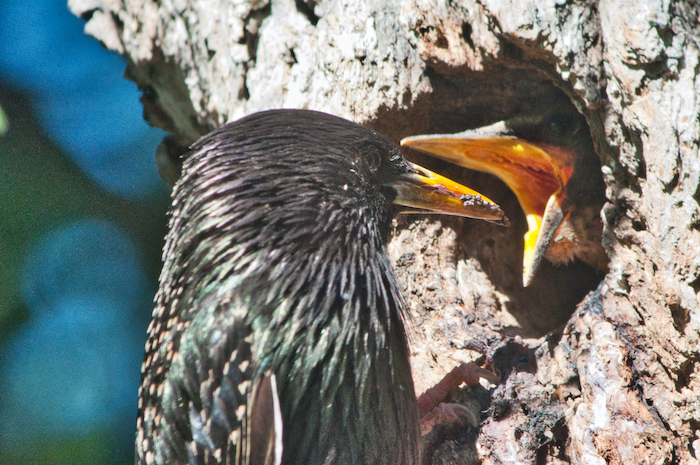
Starlings may offer us a mirror as much as a window, but let’s look through the window at this versatile, widespread, up-and-down species.
Starlings are ubiquitous in North America, living from Alaska to Florida and from Labrador to Baja California. They typically follow human development, preferring lands cleared for agriculture, golf courses, or parking lots. In winter they gather in vast herds which can descend on open fields and scour them like locusts, their quick-scuttling movements prodding some to call them “winged vermin.” But then they leap into the air where, as a flock and perhaps with other blackbirds, they dance in beautiful murmurations, the wheeling starbursts of motion that 1990’s screen-savers sought to emulate and that have been filmed and set to classical music.
Starlings are one of our blackbirds, not taxonomically but functionally. They’re the chunky ones with stubby tails and, in flight, wings that extend like isosceles triangles. They walk quickly, their heads bobbing like chickens’. The new feathers they grow each fall are tipped white gold, creating a winter plumage that can surprise viewers who have close-up or binocular looks. Over the winter months their bright spots wear away, leaving spring birds with an iridescent black coat shining behind a bill that turns a sunny yellow.
Males woo females by establishing a nest site. They are aggressive, and will harass other birds–flycatchers, bluebirds, ducks, etc.– from a woodpecker hole to claim it for their own. They will stuff the cavity with plant and animal debris, from pine needles to trash, and form a hollow inside. Sufficiently impressed, the female will make her finishing touches and lay a handful of eggs. The parents will share incubation duties for twelve days, and then feed the young in the nest until they fledge three weeks later.

Starlings are social and socially adept, if not always friendly. Vocally they are first-rate mimics of other birds. In murmurations they coordinate their synchronized flights by attending to and following the birds right near them. They have been reported playing–taking turns sliding down a metal roof with morning frost. When they have disputes, over, say, territory, starlings are plain-spoken. A bird wanting to enforce its turf will simply encroach on another’s space until, sidling down the wire or branch, the second bird runs out of space and flutters away. Not much nuance in problem-solving for these birds.
The starlings in America are not native, but European. They were introduced into New York’s Central Park in the 1890’s by Shakespeare fans who wanted to import all the birds the bard mentioned. In the hundred-thirty years since, they have followed the development of European-cum-Americans across the continent. The birds have not had time to genetically diversify, and their rapid expansion is now in reverse. As it is with many songbirds, there are about half as many starlings in North America as there were when we celebrated our first Earth Day.
